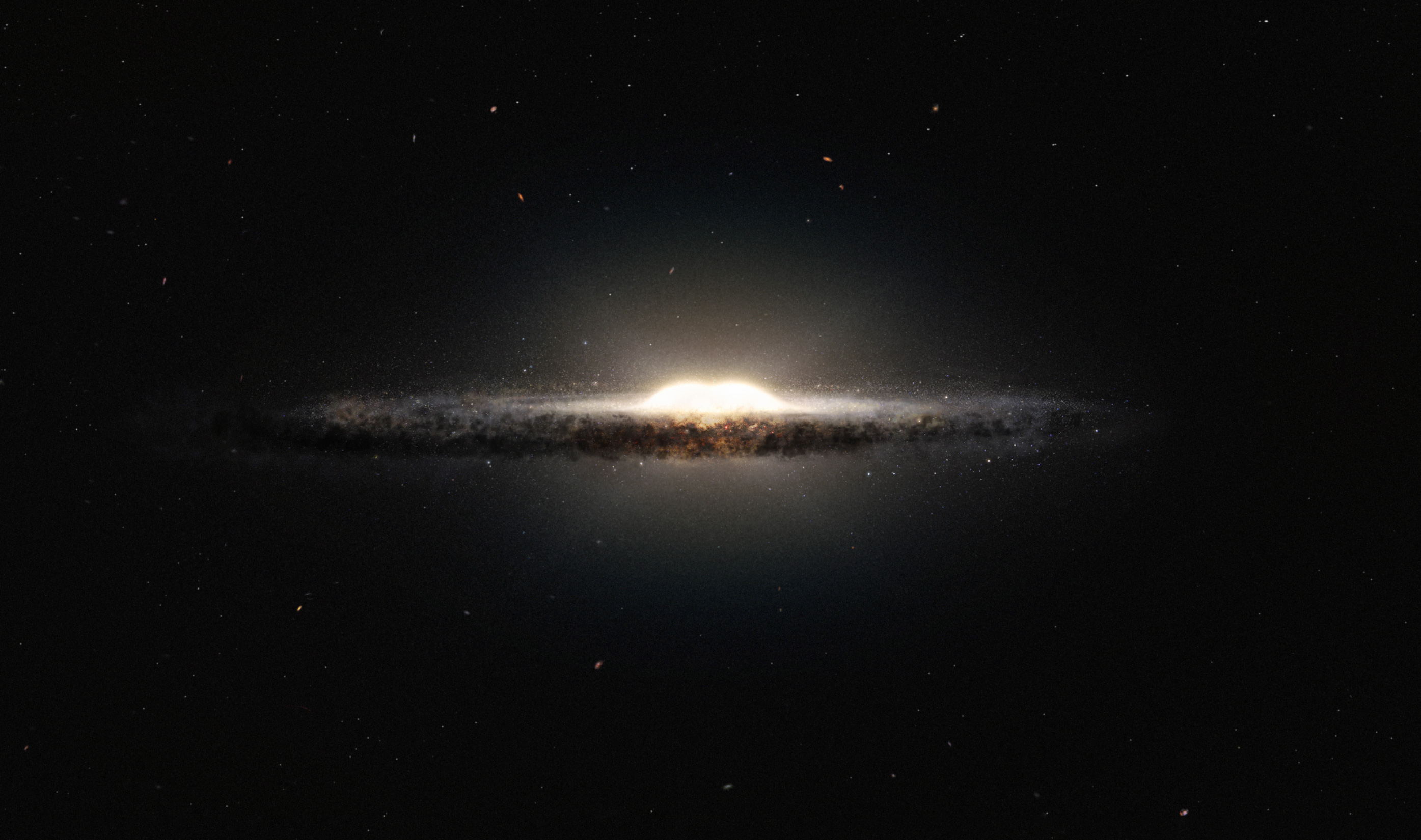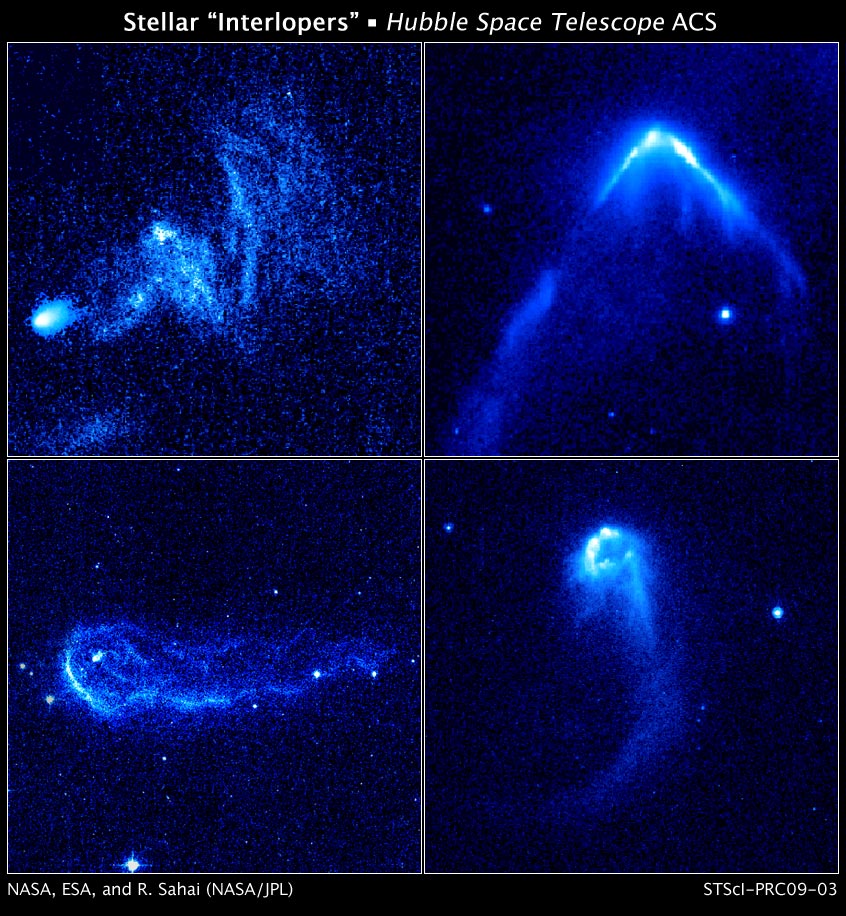|
Hercules Stream
The Hercules stream is a large moving group of stars that are trailing behind the local rate of galactic rotation and are heading further out in the galactic disk, disk relative to the Galactic bulge, galactic core. Members of this stream may sometimes be referred to as Hercules stars. This stream was first hypothesized to be the remnants of a star cluster, cluster of stars that has evaporated over time, becoming Gravitational binding energy, gravitationally unbound. Alternatively, the Hercules stream may have been created as a resonant effect of the Barred spiral galaxy, galactic bar at the center of the Milky Way. This stream of stars has a Space velocity (astronomy), space velocity component ''V'' equal to about −40 km/s. References {{reflist Moving groups ... [...More Info...] [...Related Items...] OR: [Wikipedia] [Google] [Baidu] |
Moving Group
In astronomy, stellar kinematics is the observational study or measurement of the kinematics or motions of stars through space. Stellar kinematics encompasses the measurement of stellar velocities in the Milky Way and its satellites as well as the internal kinematics of more distant galaxies. Measurement of the kinematics of stars in different subcomponents of the Milky Way including the thin disk, the thick disk, the bulge, and the stellar halo provides important information about the formation and evolutionary history of our Galaxy. Kinematic measurements can also identify exotic phenomena such as hypervelocity stars escaping from the Milky Way, which are interpreted as the result of gravitational encounters of binary stars with the supermassive black hole at the Galactic Center. Stellar kinematics is related to but distinct from the subject of stellar dynamics, which involves the theoretical study or modeling of the motions of stars under the influence of gravity. Stel ... [...More Info...] [...Related Items...] OR: [Wikipedia] [Google] [Baidu] |
Star
A star is an astronomical object comprising a luminous spheroid of plasma (physics), plasma held together by its gravity. The List of nearest stars and brown dwarfs, nearest star to Earth is the Sun. Many other stars are visible to the naked eye at night sky, night, but their immense distances from Earth make them appear as fixed stars, fixed points of light. The most prominent stars have been categorised into constellations and asterism (astronomy), asterisms, and many of the brightest stars have proper names. Astronomers have assembled star catalogues that identify the known stars and provide standardized stellar designations. The observable universe contains an estimated to stars. Only about 4,000 of these stars are visible to the naked eye, all within the Milky Way galaxy. A star's life star formation, begins with the gravitational collapse of a gaseous nebula of material composed primarily of hydrogen, along with helium and trace amounts of heavier elements. Its stellar ... [...More Info...] [...Related Items...] OR: [Wikipedia] [Google] [Baidu] |
Galactic Disk
A galactic disc (or galactic disk) is a component of disc galaxies, such as spiral galaxies and lenticular galaxies. Galactic discs consist of a stellar component (composed of most of the galaxy's stars) and a gaseous component (mostly composed of cool gas and dust). The stellar population of galactic discs tend to exhibit very little random motion with most of its stars undergoing nearly circular orbits about the galactic center. Discs can be fairly thin because the disc material's motion lies predominantly on the plane of the disc (very little vertical motion). The Milky Way's disc, for example is approximately 1 kly thick but thickness can vary for discs in other galaxies. Stellar component Exponential surface brightness profiles Galactic discs have surface brightness profiles that very closely follow exponential functions in both the radial and vertical directions. Radial profile The surface brightness radial profile of the galactic disc of a typical disc galaxy (vie ... [...More Info...] [...Related Items...] OR: [Wikipedia] [Google] [Baidu] |
Galactic Bulge
In astronomy, a galactic bulge (or simply bulge) is a tightly packed group of stars within a larger star formation. The term almost exclusively refers to the central group of stars found in most spiral galaxies (see galactic spheroid). Bulges were historically thought to be elliptical galaxies that happened to have a disk of stars around them, but high-resolution images using the Hubble Space Telescope have revealed that many bulges lie at the heart of a spiral galaxy. It is now thought that there are at least two types of bulges: bulges that are like ellipticals and bulges that are like spiral galaxies. Classical bulges Bulges that have properties similar to those of elliptical galaxies are often called "classical bulges" due to their similarity to the historic view of bulges. These bulges are composed primarily of stars that are older, Population II stars, and hence have a reddish hue (see stellar evolution). These stars are also in orbits that are essentially rando ... [...More Info...] [...Related Items...] OR: [Wikipedia] [Google] [Baidu] |
Star Cluster
Star clusters are large groups of stars. Two main types of star clusters can be distinguished: globular clusters are tight groups of ten thousand to millions of old stars which are gravitationally bound, while open clusters are more loosely clustered groups of stars, generally containing fewer than a few hundred members, and are often very young. Open clusters become disrupted over time by the gravitational influence of giant molecular clouds as they move through the galaxy, but cluster members will continue to move in broadly the same direction through space even though they are no longer gravitationally bound; they are then known as a stellar association, sometimes also referred to as a ''moving group''. Star clusters visible to the naked eye include the Pleiades, Hyades, and 47 Tucanae. Open cluster Open clusters are very different from globular clusters. Unlike the spherically distributed globulars, they are confined to the galactic plane, and are almost always fo ... [...More Info...] [...Related Items...] OR: [Wikipedia] [Google] [Baidu] |
Gravitational Binding Energy
The gravitational binding energy of a system is the minimum energy which must be added to it in order for the system to cease being in a gravitationally bound state. A gravitationally bound system has a lower (''i.e.'', more negative) gravitational potential energy than the sum of the energies of its parts when these are completely separated—this is what keeps the system aggregated in accordance with the minimum total potential energy principle. For a spherical body of uniform density, the gravitational binding energy ''U'' is given by the formula Chandrasekhar, S. 1939, ''An Introduction to the Study of Stellar Structure'' (Chicago: U. of Chicago; reprinted in New York: Dover), section 9, eqs. 90–92, p. 51 (Dover edition)Lang, K. R. 1980, ''Astrophysical Formulae'' (Berlin: Springer Verlag), p. 272 U = -\frac where ''G'' is the gravitational constant, ''M'' is the mass of the sphere, and ''R'' is its radius. Assuming that the Earth is a sphere of uniform density (which i ... [...More Info...] [...Related Items...] OR: [Wikipedia] [Google] [Baidu] |
Barred Spiral Galaxy
A barred spiral galaxy is a spiral galaxy with a central bar-shaped structure composed of stars. Bars are found in about two thirds of all spiral galaxies, and generally affect both the motions of stars and interstellar gas within spiral galaxies and can affect spiral arms as well. The Milky Way Galaxy, where the Solar System is located, is classified as a barred spiral galaxy. Edwin Hubble classified spiral galaxies of this type as "SB" (spiral, barred) in his Hubble sequence and arranged them into sub-categories based on how open the arms of the spiral are. SBa types feature tightly bound arms, while SBc types are at the other extreme and have loosely bound arms. SBb-type galaxies lie in between the two. SB0 is a barred lenticular galaxy. A new type, SBm, was subsequently created to describe somewhat irregular barred spirals, such as the Magellanic Clouds, which were once classified as irregular galaxies, but have since been found to contain barred spiral structures. Among ot ... [...More Info...] [...Related Items...] OR: [Wikipedia] [Google] [Baidu] |
Milky Way
The Milky Way is the galaxy that includes our Solar System, with the name describing the galaxy's appearance from Earth: a hazy band of light seen in the night sky formed from stars that cannot be individually distinguished by the naked eye. The term ''Milky Way'' is a translation of the Latin ', from the Greek ('), meaning "milky circle". From Earth, the Milky Way appears as a band because its disk-shaped structure is viewed from within. Galileo Galilei first resolved the band of light into individual stars with his telescope in 1610. Until the early 1920s, most astronomers thought that the Milky Way contained all the stars in the Universe. Following the 1920 Great Debate between the astronomers Harlow Shapley and Heber Curtis, observations by Edwin Hubble showed that the Milky Way is just one of many galaxies. The Milky Way is a barred spiral galaxy with an estimated D25 isophotal diameter of , but only about 1,000 light years thick at the spiral arms (more at the bulge ... [...More Info...] [...Related Items...] OR: [Wikipedia] [Google] [Baidu] |
Space Velocity (astronomy)
In astronomy, stellar kinematics is the observational study or measurement of the kinematics or motions of stars through space. Stellar kinematics encompasses the measurement of stellar velocities in the Milky Way and its satellites as well as the internal kinematics of more distant galaxies. Measurement of the kinematics of stars in different subcomponents of the Milky Way including the thin disk, the thick disk, the bulge, and the stellar halo provides important information about the formation and evolutionary history of our Galaxy. Kinematic measurements can also identify exotic phenomena such as hypervelocity stars escaping from the Milky Way, which are interpreted as the result of gravitational encounters of binary stars with the supermassive black hole at the Galactic Center. Stellar kinematics is related to but distinct from the subject of stellar dynamics, which involves the theoretical study or modeling of the motions of stars under the influence of gravity. Stellar ... [...More Info...] [...Related Items...] OR: [Wikipedia] [Google] [Baidu] |






